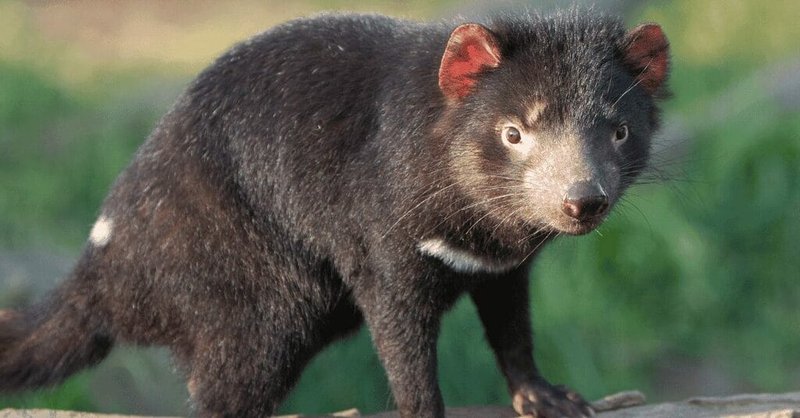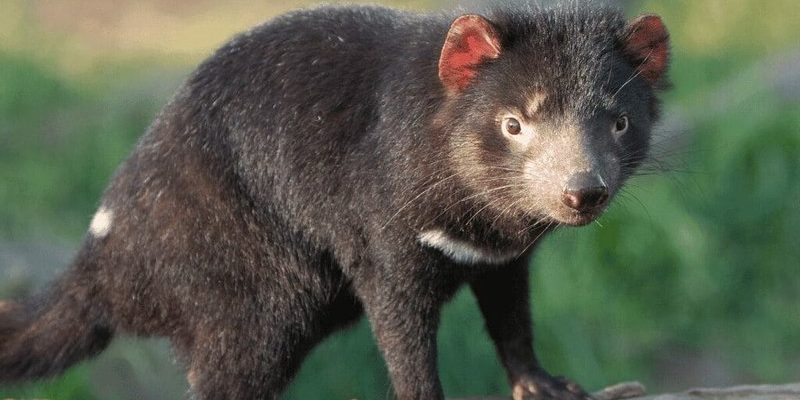
Imagine being a Tasmanian devil—small, fierce, and misunderstood. While they might look like little nightmares at first glance, they play an essential role in their ecosystem. Like many animals, they’ve been the victims of tales that don’t tell the whole story. Here’s the thing: understanding the truth not only enlightens us about these creatures but also helps us appreciate the delicate balance of nature they help maintain.
1. Tasmanian Devils Are Not Actually Devils
It’s easy to be misled by the name, but Tasmanian devils aren’t demons from hell. They’re marsupials, just like kangaroos and koalas. Their scientific name is *Sarcophilus harrisii*, which translates to “flesh lover.” This is a nod to their scavenging habits, as they eat carrion and will go after prey when the opportunity arises.
These animals are often misunderstood due to their fierce reputation. People think that a name like “devil” implies something sinister. In fact, these creatures are quite shy and prefer to avoid confrontation with larger animals. When threatened, they may hiss and spit, which can create a scary image. But, honestly, isn’t that just their way of saying, “Back off! I’m not in the mood!”?
2. They Don’t Bite Your Head Off!
You might be wondering: do Tasmanian devils really bite off the heads of their prey? While they do have strong jaws and sharp teeth, they aren’t headless horror show machines. They primarily feed on small animals and carrion, using their powerful bite to access the nutritious bits.
Their bite is one of the strongest relative to body size among mammals, but they’re not out there hunting humans or pets. Instead, they serve as nature’s cleaner, consuming dead animals that others might leave behind. Think of them as the cleanup crew of the ecosystem, ensuring that nothing goes to waste. They’re more like a furry little garbage disposal than a monster!
3. They Won’t Steal Your Picnic Food
Contrary to popular belief, Tasmanian devils aren’t out to raid your picnic basket. If they were around, they’d more likely be avoiding human interactions altogether. Most of the time, these creatures are nocturnal, meaning they’re active at night, while you’re sleeping, dreaming of cheese sandwiches and brownies.
If you’re hiking in Tasmania and see a devil, it’s probably hoping you don’t notice it as it scurries away. These little guys are not the thief in the night you might think they are. So, save your snacks, and rest assured, you won’t find a devil nibbling on your sandwich while you’re busy chatting and enjoying the day.
4. Tasmanian Devils Aren’t All That Ferocious
While they do sound quite scary with their growls and snarls, Tasmanian devils are actually quite social creatures. They often live in small groups and communicate with each other through a series of vocalizations. These sounds can range from growls to screams, leading some to think they’re always fighting. In reality, these sounds help maintain social bonds and establish territory.
You might picture a raging beast, but what you have instead is a small creature that shows a lot of personality! Their social interactions are more about cooperation than conflict. They share food and help each other out, especially during feeding times. Picture a family gathering around the dinner table—everyone chatting and sharing, rather than bickering over the last piece of pie.
5. They Are Not Endangered Because of Their Behavior
Another common myth is that Tasmanian devils are endangered due to their fearsome feeding habits. In truth, they face more significant threats from disease and habitat loss than from their own actions. A devastating condition called Devil Facial Tumor Disease (DFTD) has affected their populations dramatically. This transmissible cancer has led to a decline in their numbers, which is a big worry for conservationists.
While their fierce reputation makes them sound like tough little beasts, it’s worth noting that their survival is at risk due to external factors rather than their behavior. This makes protecting their habitat and health all the more crucial. So, next time you hear about the plight of Tasmanian devils, remember that it’s not about how they act, but rather the challenges they face in a changing world.
6. They Aren’t Typical Pets
You might have seen cute videos of Tasmanian devils online and thought, “I want one as a pet.” But here’s the thing: they’re not suitable pets! Tasmanian devils require specialized care and a habitat that mimics their natural environment. They roam large territories and need space to thrive.
Moreover, they can be quite vocal and territorial, so keeping one in a city apartment wouldn’t be fair to them—or your neighbors. If you’re fascinated by these animals, consider supporting wildlife sanctuaries and conservation programs instead. This way, you can contribute to their preservation while enjoying their quirky nature from afar.
7. They’re Not Just Cute Faces
Finally, it’s easy to look at a Tasmanian devil and focus only on its adorably fierce face. However, these creatures play an important role in maintaining ecosystem balance. By scavenging on dead animals, they help control diseases and nutrient cycling in their environment.
You might think of them as the unsung heroes of the Tasmanian landscape. Their unique role highlights how interconnected our world is. Losing them could disrupt the balance, leading to unforeseen consequences in the ecosystem. So next time you think about Tasmanian devils, remember they’re not just a cute face—they’re vital players in nature’s game.
As we wrap this up, it’s clear that the Tasmanian devil is a creature wrapped in myths and misconceptions. Understanding these little beasts is key to appreciating their role in the ecosystem and promoting their conservation. So, the next time you hear about Tasmanian devils, think of them as fascinating, social animals rather than ferocious monsters. They deserve our respect and protection!

